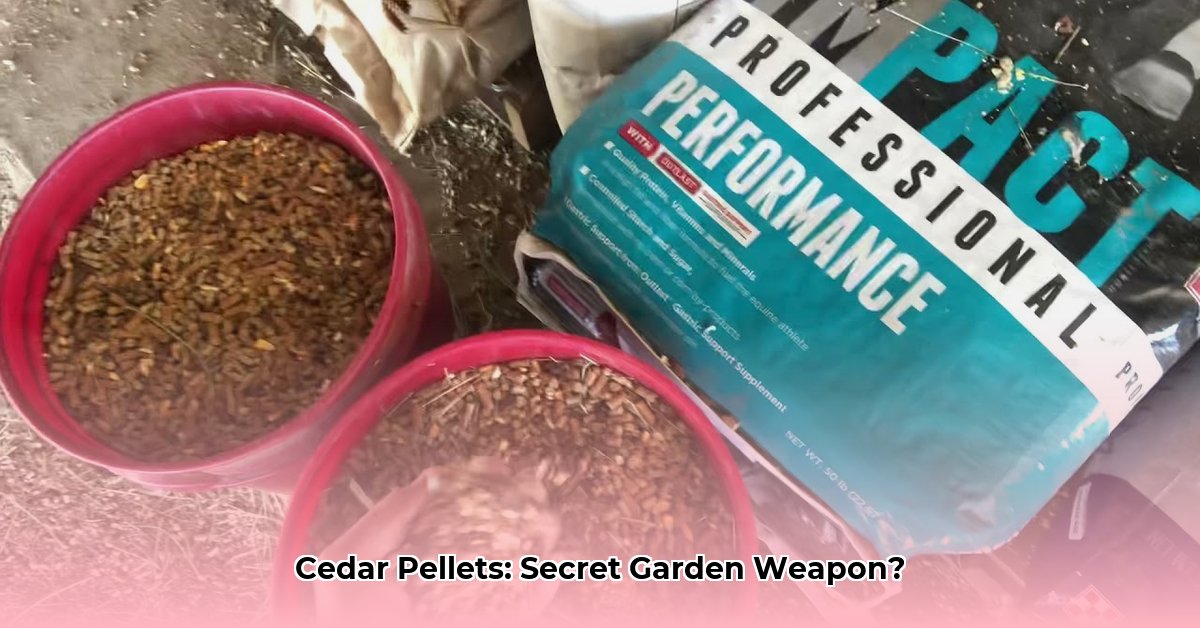
Cedar Pellets and Granules from Tractor Supply: A Deep Dive into Sustainable Farming Practices
Ever wish for a simpler, greener approach to pest control and soil health? Farmers are increasingly seeking natural alternatives, and cedar products are gaining traction. This article explores how cedar pellets and granules from Tractor Supply can contribute to a healthier, more sustainable farm. We'll analyze their effectiveness, compare their pros and cons, and highlight areas needing further research. Whether you're a seasoned farmer or a beginner, this guide will help you decide if cedar products are right for your needs. For more information on pest control options from Tractor Supply, check out this helpful resource.
Cedar Granules: A Natural Pest Repellent?
Tractor Supply offers cedar granules, small aromatic cedar wood pieces. The premise is straightforward: the strong scent repels certain insects, acting as a natural barrier. While many farmers report reduced pest populations, robust scientific evidence is limited. Small-scale studies suggest promise, but larger trials are needed to confirm effectiveness across various pests and crops. Tractor Supply offers convenience, but it’s not a universal solution.
A crucial area for research is identifying which insects respond best to cedar granules. Some experts believe certain species are more sensitive to the aroma, suggesting possibilities for more targeted applications. Further research will clarify this, enabling farmers to optimize their approaches. Currently, cedar granules show potential but require more investigation before widespread adoption. Is this a sustainable solution for all insect pests, or just some?
Wood Pellets: Enhancing Soil Health
Beyond their use in stoves, wood pellets from Tractor Supply can improve soil health. These compressed wood particles improve drainage, water retention, and slowly release nutrients. It's like providing your soil with a slow-release vitamin supplement, leading to stronger plant growth. However, sustainable sourcing is critical to avoid contributing to deforestation. The transportation aspect also impacts the overall environmental footprint. Minimizing carbon emissions during production and delivery is essential.
The long-term effects of wood pellets as a soil amendment require further scrutiny. Although short-term benefits regarding nutrient release and water retention are acknowledged, the long-term effects on soil structure and microbial activity necessitate additional research. The type of wood used also plays a role, influencing nutrient release and potential environmental impacts. What's the optimum application method, and how do we mitigate potential nutrient leaching? Careful monitoring of soil and plant health is crucial.
Cedar Granules vs. Wood Pellets: A Comparative Analysis
Let's compare these Tractor Supply options:
| Feature | Cedar Granules | Wood Pellets |
|---|---|---|
| Primary Use | Pest control (certain insects) | Soil amendment |
| Effectiveness | Variable; more data needed | Proven soil improvement; long-term effects require further study |
| Environmental Impact | Relatively low; sustainable production crucial | Dependent on sustainable forestry and transport methods |
| Cost | Moderate; varies with quantity needed | Relatively inexpensive compared to chemical fertilizers |
| Scalability | Currently limited by research and application methods | Potentially high, with responsible sourcing and production |
Both methods offer potential, but neither is a perfect solution. A balanced approach, tailored to your specific farming context and environmental concerns, is key. How can we maximize their benefits while minimizing drawbacks?
Future Directions & Research Needs
Sustainable agriculture requires continued innovation and collaboration. Further research on cedar granules and wood pellets is crucial. We need large-scale studies to confirm efficacy, refine application methods, and fully assess their environmental impact. This collaborative effort involves scientists, farmers, policymakers, and consumers, demanding transparent labeling for informed decisions. By working together, we can unlock the true potential of these natural alternatives and advance sustainable farming practices.
Conclusion
Cedar granules and wood pellets from Tractor Supply present promising avenues for sustainable pest control and soil improvement. However, further research is needed to fully realize their potential. A balanced, informed approach, considering both the benefits and drawbacks, is crucial for responsible and effective implementation. The future of sustainable agriculture depends on such collaborative efforts. What steps can we take to bridge the knowledge gap and promote responsible adoption of these potentially valuable tools?